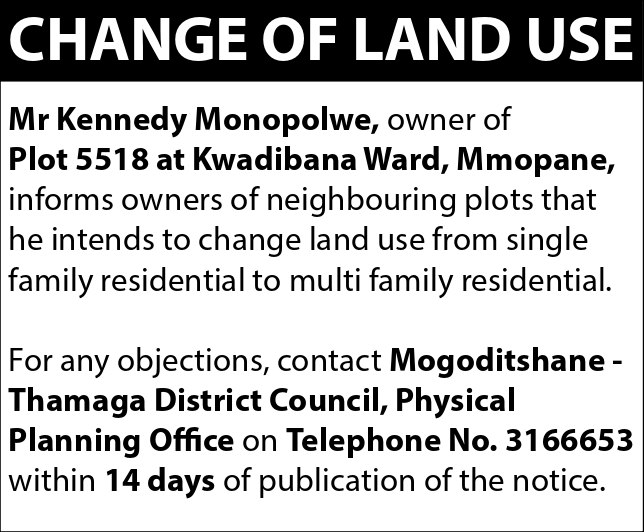While global food commodity prices dropped for a second month in a row as oil prices plummeted, in March 2020 we also started seeing early signs of what could become a continental food crisis, writes MARIE WILKE
Stay at home orders across Africa implemented over the past weeks have meant that millions are losing out on their income, threatening them with varying levels of food insecurity as staples become unaffordable. The African Union estimates that 20 million people will lose their livelihoods because of the pandemic while the World Food Programme has already recorded food insecurity spikes across various African regions.
Double jeopardy
But the lockdowns have also disrupted transport and labour supply, affecting food production. And while the world is not about to run out of food, our ability to deliver this food to the right places at the right time and at the right price is about to be tested.
Over and beyond the growing household-level food insecurity in our nations, the challenge of national food security remains acute for several southern African countries. The 2018/19 regional drought combined with localised floods and the resulting widespread crop failure, culminated in a relatively poor harvest across all of Zimbabwe, southern Zambia, northern Namibia, and southern Botswana.
The overall cereal production for Botswana, for instance, was estimated at 8,000 tonnes in 2019, which was 82% below the previous five-year average. And because only 17% of Botswana’s grain demand is produced locally, the nation is highly dependent on imports from South Africa and Zimbabwe where the loss has been even greater. In the wake of zero rainfall and the devastating Cyclone Ida, some regions of the country were unable to grow any crops in the past season. The World Food Programme is estimating that 45 million people across the region now face varying levels of hunger because of the drought, calling for unprecedented levels of food aid to the affected areas.
Starving thy neighbour: Lessons from 2008
Faced with the bleak outlook of food shortages, net-food importing countries (NFIDCs) and landlocked nations (of which there are 16 in sub-Saharan Africa) tend to stockpile. On 31 March, President Mokgweetsi Masisi announced that Botswana – both a NFICS and a landlocked country – would be building up a stock of essential items, including water and grains. While some may consider this decision to stockpile prudent, it did spark criticism from other African leaders such as Ugandan President Yoweri Museveni, arguing against any type of stockpiling and in favour of regional trade in food.
And indeed, what we are seeing today in terms of stockpiling of essential grains and disruptions to global supply chains mirrors the early stages of the 2007 food crisis that was triggered by the global financial crisis. Ironically, small scale farmers in Africa and Asia were the ones who suffered the most during this crisis. As prices for cash crops plummeted and global food prices rose sharply, farmers simply could not afford food any longer as they relied on income from their cash crops to purchase staples. Likewise, in 2014, when Ebola spread across West Africa, prices for essential crops such as rice and cassava rose by up to 150% in the most affected countries as borders were closed and countries tried to rely on their local production.
In other cases, farmers opted to use their grains as food rather than keeping them for the next ploughing season. And they used the last of their income to feed their families, leaving no money to purchase essential agricultural inputs such as seeds and fertilizer. It is easy to see how food crises at the smallholder level can become a vicious cycle with long-lasting repercussions for harvest levels.
The solution is not a ramping up of local production, though support to competitive industries and industry players such as medium-sized horticulture producers in Botswana, and well-designed import subsidy programmes for small-scale farmers for the purpose of livelihood security can go a long way.
Action requires solidarity
Instead, to avoid the emergence of a food crisis in Africa, the continent’s leaders must abstain from zero-sum nationalism and be ready to take action in three essential areas.
1) Continental and regional coordination to ensure enough reserves and stable access at national levels.
Regional trade must continue to flow and countries must refrain from all types of export bans and quotas. Transparency with regard to food reserve levels and production should be upheld. The African Continental Free Trade Area was conceived to advance trade integration on the continent, and while its launch was postponed to 2021 in the wake of COVID-19, more than ever, we need strong commitments from African leaders to maintain open and tariff-free trade corridors.
2) Invest in measures to ensure the survival of hard-hit cash crop industries and invest in competitive sectors.
Invest in warehouse infrastructure and warehouse receipt systems for storage aimed at reducing post-harvest losses, especially for the horticulture sector, and consider e-voucher solutions for agricultural inputs, especially for capital intensive industries that require labour intensive action even during idle periods.
3) Address household food security by pursuing creative solutions.
Consider universal income and direct cash transfer solutions alongside digital food stamps to reduce bureaucracy and inefficiency when addressing household-level food insecurity.
*Marie Wilke is Associate Director at Africa Practice. A trade lawyer by background, Marie served as a trade advisor at the SADC Secretariat before joining Africa Practice.www.africapractice.com




